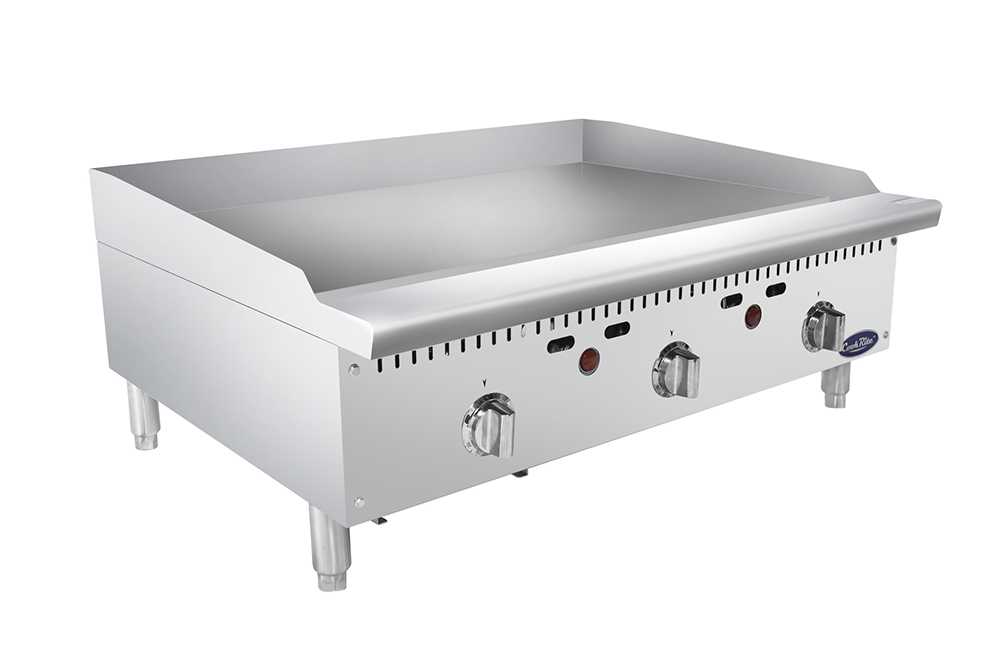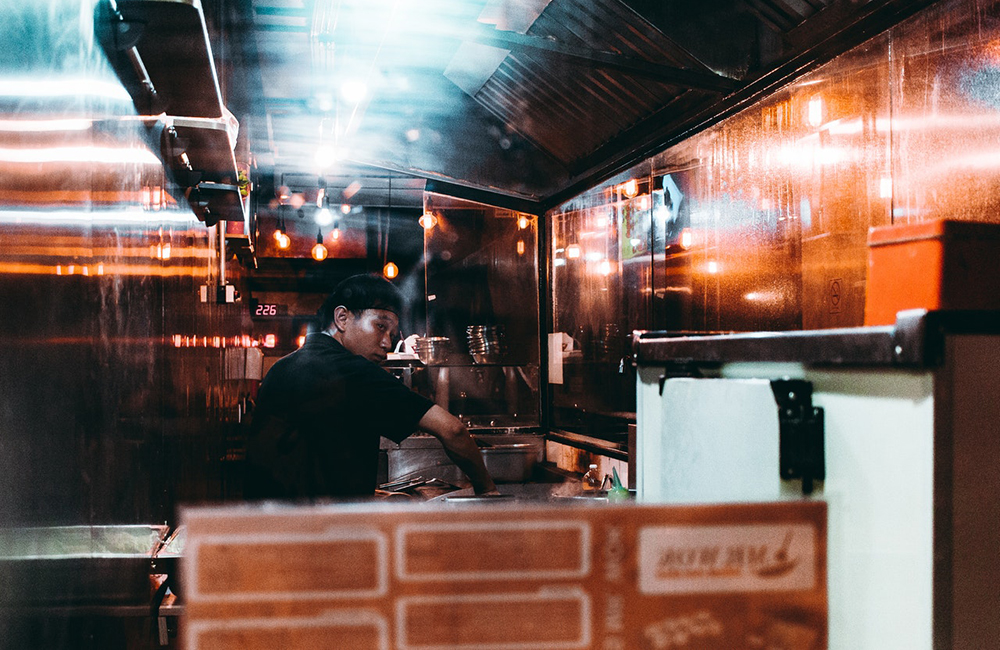Griddles are the backbone of many restaurant kitchens. They're a quick, efficient and versatile cooking tool that makes it easy to prepare several foods at once.
Whether you're just opening your restaurant or looking to upgrade your kitchen, you have a big decision ahead of you. It's important to weigh your options carefully and consider the following factors.

Factors to Consider When Choosing a Commercial Griddle
When choosing a griddle for your restaurant, there are several factors that need to be considered, including:
Types of Griddles
What type of restaurant griddle do you need? Before you look at any other factor or feature, you need to determine which type of griddle will work best in your restaurant kitchen.
There are three main types of restaurant griddles:
Countertop Griddle
A commercial countertop griddle is ideal for restaurants that don't have designated space for a built-in. They can be placed on any countertop or table that has access to a gas or electrical source.
Countertop griddles have another advantage: they're portable. If your restaurant offers catering services, you can take your griddles with you to offsite locations.
Because they're more compact and portable, countertop models tend to be more affordable than other types of commercial griddles.
Drop-in Griddle
A drop-in griddle is a more permanent solution and creates a seamless look in your kitchen. A built in countertop griddle is more expensive, but it's worth the cost if you don't need a portable commercial griddle and need to preserve as much surface space as possible.
Teppanyaki Griddle
Also known as Japanese griddles, a Teppanyaki griddle is a type of drop-in griddle. What sets the Teppanyaki apart from other griddles is that the heating element is at the center of the griddle.
The placement of the heating element keeps the edges of the griddle cooler. This allows you to warm foods along the edges of the griddle and cook food at a higher temperature at the center of the cooking surface.

Heat Source
Once you determine what type of griddle to buy, you'll need to consider fuel source. Do you want an electric commercial griddle, or a commercial gas griddle?
The answer may or may not be determined for you. All commercial kitchen can use an electric griddle, but only some can use gas. If you have the option to choose between gas and electric, consider the following:
Electric
A commercial electric griddle is convenient and easy to use. Many newer models come with energy efficient features to reduce operating costs.
One big advantage of a commercial grade electric griddle is that it heats more evenly than gas or propane-powered models, and the results are more consistent.
There's also a matter of durability. A heavy duty electric griddle will last quite a while.
The only drawback with electric is that it takes longer to heat up than gas griddles.
Gas
A gas countertop griddle is still the go-to choice for professional chefs. A restaurant gas griddle heats up quickly, and thermostatic controls make it easier to control the heat/temperature.
Another major advantage is that gas griddles are less expensive to operate because they hook right up to natural gas or propane lines.
Induction
Induction griddles are still new to the market, but they offer the best of both worlds. Induction heating elements heat the plate quickly and evenly to speed up cooking times. A commercial induction griddle uses an electric power source, so it can be used in virtually any commercial kitchen.

Size
The size of the griddle is another important consideration. The size you need will ultimately depend on your menu and customer volume.
Imagine your restaurant is at full capacity. How many items would you need to put on the griddle at one time to serve customers as efficiently as possible? Use that figure to determine which size griddle you'll need for your kitchen.
If you only have a few menu items that are cooked on a griddle, you won't need nearly as large of a griddle as a restaurant that serves mostly burgers or breakfast food items.
The most common griddle sizes are:
- 24"
- 36"
- 48"
- 60"
- 72"
When choosing a size, you will also need to consider:
- How much available space you have
- Whether you need a medium duty or heavy duty model
If you need a large griddle, you may be better off going with a drop-in model.
Surface Material
Along with size and fuel type, you will also need to consider the griddle's surface material. Your options are relatively limited in this department. Most griddle plates are made of either stainless steel or chromium.
A commercial stainless steel griddle will be more resistant to scratches and dents. That's why many breakfast restaurant kitchens favor the stainless steel pancake griddle.
Chromium does have its advantages. Along with its shiny appearance, chromium is highly resistant to corrosion.
Plate Thickness
One important factor that's easy to overlook is the thickness of the griddle plate. If the griddle is going to be used on a regular basis, go with a thicker plate.
Commercial griddle plates come in three basic thicknesses:
- 1/2"
- 3/4"
- 1"
If your griddle will be used mostly for breakfast items, a thinner plate may work well. Thicker plates can better withstand heavy use, and they store more heat. They're great for cooking frozen items because they recover more quickly. Thinner plates will take longer to heat back up, which only extends the cooking time even further.
If you choose the wrong plate thickness, you may wind up with a needlessly inefficient kitchen.
Control Options
Commercial griddles have two main types of controls:
- Manual controls, which are basic and have just a few main heat settings: low, medium and high.
- Thermostatic controls, which allow you to choose a precise temperature.
Griddles with thermostatic controls are naturally more expensive, but if you're cooking items that require precise temperatures, you need thermostatic controls.
Also, consider how many sections the griddle has, if any. If you plan to cook different foods at one time and those foods require different levels of heat, you will need a griddle that provides independent heat control for each section.

Ease of Use
Efficiency is crucial in any restaurant kitchen. If there's a bottleneck anywhere in the process, you may be faced with a lot of impatient customers during busy hours.
To keep your kitchen running smoothly, choose a griddle that's easy to use and clean. Carefully analyze each feature to determine whether it will make your staff's life easier or harder.
It's worth the extra cost for a griddle that's easy to use. Otherwise, you may pay for it in the long run if your kitchen staff loses efficiency.
Cost
When buying any new restaurant equipment, cost may be the ultimate deciding factor - but it shouldn't be the only one. Running a restaurant is expensive, so naturally, you have a set budget. However, it's worth investing in a griddle that will enhance kitchen efficiency while being easy to maintain and durable.
Keep these factors in mind when choosing a griddle for your restaurant kitchen. Remember that while cost is important, efficiency and performance are even more important. Otherwise, you may wind up losing customers or compromising service in the long-run.


